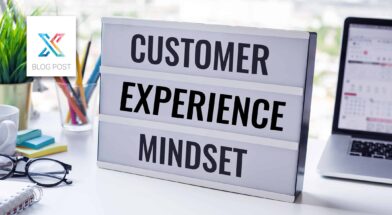People don’t want to buy a quarter-inch drill, they want a quarter-inch hole. - Theodore Levitt
A client shared their challenge with identifying clients that would be willing to take advantage of a new technology they had adopted. This technology would allow the firm to more accurately identify the potential for inconsistencies and errors in project plans before they went to construction. If your firm has ever done a project that involves underground utilities, you’re probably nodding your head thinking, “great idea.” Part of the challenge for the firm was getting the buy-in they needed from their clients during the scoping phase of the project BEFORE the client had experienced the benefits of this technology. To help them find clients who would be willing (and maybe even excited) to be early adopters of this technology, we offered them one perspective, two tools and three tactics.
One new perspective
When considering the introduction of a new service or technology, firms often focus on the results they believe their new product will provide the client. But when you focus on the what, you risk only providing information about possibilities that might be of interest or importance to your clients. In other words, there is no guarantee that these results will even resonate. In this example, this new technology offered the potential for identifying inconsistencies early (reducing potential errors and/or change orders). However, does marketing the product as a means of reducing errors and time spent, resulting in lower costs, really appeal to your clients? Are these the factors that will drive them to use this technology on a current project or future project? Or, are these simply side-effects and possibilities that sound appealing and desirable, but are not definitive enough to get them on board?
When you direct your efforts away from promoting the results of your product or service, and instead emphasize the experience your clients will have, you tap into emotional drivers. Everyone loves to talk about Apple as the ultimate experience creator. Consider their strategy to penetrate the market in the early years. Rather than focusing on features and results of their product, they concentrated on the user experience. Everything was focused on the ease and intuitiveness of their products. This thinking remains at the core of how they continue to operate their business. By centralizing all efforts on the interactions and experiences that buyers and potential adopters would and will have with their products, they set themselves apart in the world of technology. Customers then responded to this experience with Apple products by discussing the features and results.
Two tools
The two tools we recommend focus on communication. Everyone seems to agree that being a good communicator is an essential business skill. No matter what field you are in, communicating effectively, getting your message across, and tell your story is critical. And, no matter how wonderful your product, service, or expertise, it matters little if you cannot effectively communicate that value to your clients.
The first tool deals with a fundamental skill, a prerequisite if you will, to becoming an excellent communicator – empathy. Empathy (Read Getting Started with Client Empathy Mapping) hasn’t traditionally been a focus for the world of business. When sitting in your strategic planning meetings, you probably don’t talk about how you will crush the competition, with empathy. And yet, empathy is the linchpin between doing great work and engaging with your clients and stakeholders. We talked about the importance of emphasizing your clients’ experience working with you rather the results or outcomes you provide. If you don’t anticipate your clients’ thoughts, needs, concerns, and values, how will you be able to deliver an Apple-like experience? You won’t.
The second important tool is your client-listening program (VoC). Let’s go back to our Apple example. The individuals most likely to purchase another Apple product are the raving fans of its existing products. Make sense, right?
Your client listening, or VoC program lets you gather information about your clients’ perception of working with your firm. In an earlier post, we talked about the missing axis of information, your clients’ experience. This information gives you tremendous insight not only related to profitability. Your clients’ feedback can help you to understand which ones are likely to be open to having you introduce new technology or services on their projects. Clients who are extremely happy (and have said so using quantifiable metrics) are more likely to be receptive about whatever you bring them to consider. They have told you they value your firm and the expertise you bring to them. And they have a strong sense you are an integral part of their team. They trust you.
Three tactics
Now that you've refocused your perspective, done your client empathy mapping, and listened to your clients, how can you take this information and increase the adoption of you new technology or service? Consider this implementation strategy.
- Use your client listening to gather feedback about the technology from the raving fans who have successfully used it. Look for patterns in the responses you receive. Use those patterns to help evaluate a prospect’s openness to this technology. Use your VoC program to identify “more of the same” type of clients. Note, this strategy also works well for expanding your existing service disciplines to other clients.
- Add the benefits of the technology to your website. This will enable prospects to learn more about the technology and see how it can benefit them on an upcoming project. Take advantage of the information you identified as part of your client empathy mapping to create a FAQ about using the technology. This will demonstrate your understanding of the questions and emotional needs of your prospects. Highlight the positive experience your clients are having with the technology in your proposal submittals where you are suggesting it as a value-add to their project by including a “What Our Clients Are Saying…” piece.
- Consider offering one of your clients the opportunity to do a pilot or use the technology on a small project without charging for this in your fee. Using the product or service in a limited capacity can be a powerful tactic to demonstrate value. Allow them to experience what makes this new technology worth their attention. Keep set up and implementation simple, the focus should be on activation and the directly correlated results. When using this strategy, it is critical to know your costs and when to cut ties.
In the end, your excitement about this new technology (or service offering) will not be enough to persuade your clients to pay for it on their project. Telling a firm something has an ROI is not worth the paper it's written on. Showing a firm an irrefutable success based on a positive user experience is much more powerful.
Let Client Savvy help you build client empathy and leverage the power of your raving fans. Learn more about these tools by contacting our team at 1.866.433.7322.





